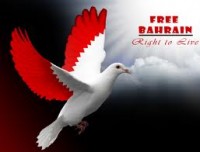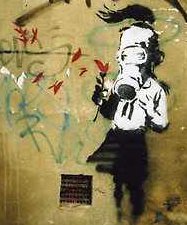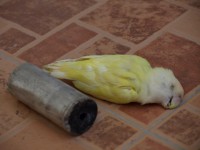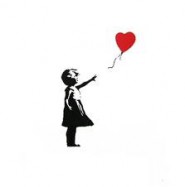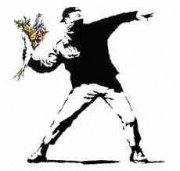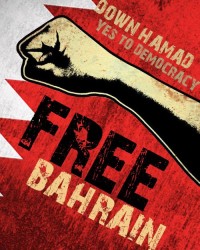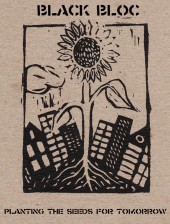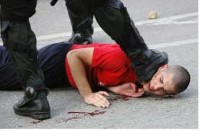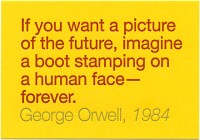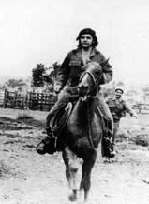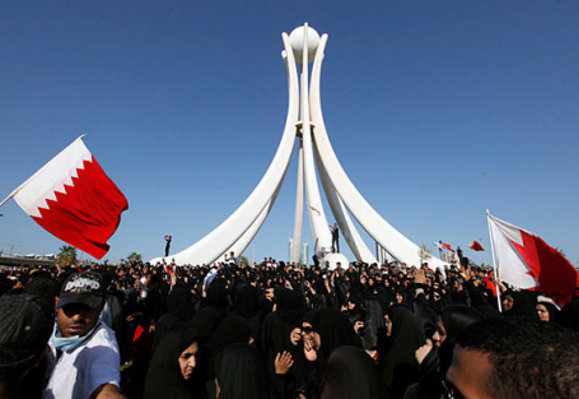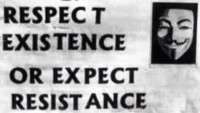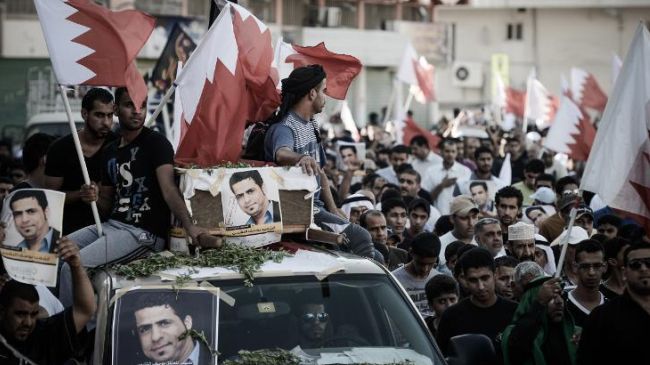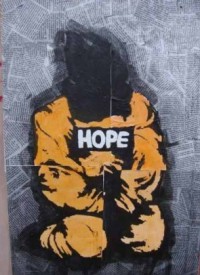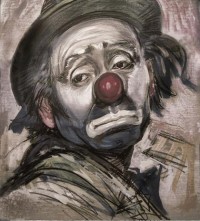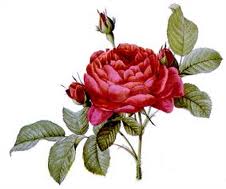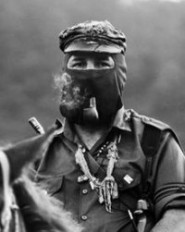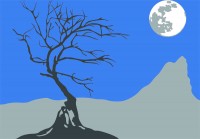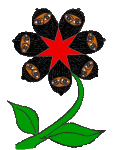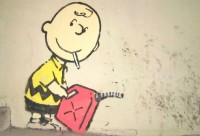Appreciating Resistance and Protest, Tactical Awareness and Counting the Cost
TIRE FIRE REPORT
2002 May – California, USA Legislative Report
Excerpt – All smoke contains toxic chemicals, different types of smoke can vary in the proportions of individual toxic constituents and toxicant classes. However, there is enough similarity between smoke types to make comparisons useful. Each tire contains about 2 gallons of oil that is similar to heating oil. Therefore tire fire smoke is probably most like an uncontrolled oil fire. Tire fire smoke is particularly irritating probably in part because sulfur dioxide is generated from the sulfur in tires.
There are a number of irritating chemicals that have been identified or are also most certainly present in tire fire smoke such as sulfur dioxide, xylenes, aldehydes, toluene, and styrene. Respirable small particles composed of a carbon core with numerous chemicals attached are also a major component of smoke. Some smoke constituents (e.g. irritants and small particles) are known to trigger asthma attacks in people with preexisting asthma. Stanislaus County data on clinic visits and phone calls seems to indicate that asthmatics did experience exacerbation of symptoms. People who have been exposed to tire fire smoke, for example at the Westley tire fire, have reported symptoms that would result from exposure to irritants. Forest fire smoke and secondhand tobacco smoke exposure have also been associated in a number of studies with exacerbation of asthma.
As noted above, tire fire smoke contains many tiny particles small enough to be inhaled into the deep lung. Those particles small enough to be inhaled into the lung are referred to as PM10 because they are 10 μm (10 millionths of a meter) or less in diameter. PM10 is known to cause increased emergency admissions to hospitals for patients with lung and heart disease. Each 10 μg/m3 increase in 24 hour average PM10 concentration has been associated with a 1% increase in daily mortality in epidemiological studies conducted in a number of cities, primarily in elderly people who have pre-existing heart and/or lung disease. In London in the early 1950’s, there were days when the PM10 concentrations were extreme (several thousand μg/m3) and thousands of people died. A concern of many people is the possibility of contracting cancer because of exposure to tire fire smoke. Tire fire smoke contains a number of known cancer-causing chemicals (carcinogens). The major carcinogens of concern are the polycyclic aromatic hydrocarbons (PAHs), a large group of fused six carbon ring structures that are formed with virtually all types of combustion sources to a greater or lesser extent. These combustion sources include, for example, wood burning, automobile and diesel engines and tobacco smoke.
…complete report PDF HERE
January 19, 2012 No Comments
Black Smoke Rising
January 19, 2012 No Comments
Pretense of reform from al Khalifa is regime entrenchment, not stagnation – Bahrain’s Revolutionary Movement thrives as regime maintains reform impasse
cb editor: I respectfully disagree with the notion that democracy comes from a strong middle ground or that reform can be put forth as one sided dialogue. Especially when the one sided dialogue is but more meaningless blather that follows 40+ years of one-sided reforms that have yet to be delivered upon. The current situation in Bahrain is frequently referred to stalemate and the opposition is called uncompromising, when they are refused a chair of equality, at a table where reform agendas are set by the ruling regime. The regime , it seems, is the only party that stands at a cross-roads in Bahrain. It would seem the choice is clear, free the political prisoners, stop the human rights abuse and expedite the reforms the regime promised in 2002. It seems very clear, the regime must reform and move on with a truly democratic government or it will perish through revolution. Phlipn.
Post-BICI Bahrain: between reform and stagnation
Elham Fakhro and Kristian Coates Ulrichsen – 19 January 2012 – Open Democracy
As the first anniversary of the February 14 uprising approaches, the regime and the country at large find themselves at a crossroads in which there is dangerously little space for a strong middle ground.
Nearly two months have elapsed since the Bahrain Independent Commission of Inquiry (BICI) published a report into the unrest that shook this Persian Gulf archipelago last year. Its 513 pages laid bare the excessive use of force, systematic mistreatment, and culture of non-accountability, as the Bahraini government responded to a popular movement that challenged its grip on power. It also found no evidence of any Iranian involvement in the protests, thereby contradicting regime narratives that ascribed them to external intervention rather than domestic grievances. In response, King Hamad bin Isa Al-Khalifa, pledged to initiate reforms, and established a national commission to oversee their implementation. Yet the measures taken to date have left unaddressed many of the roots of Bahrain’s political and economic inequalities, and ongoing clashes between protesters and security forces have if anything, intensified. The result has been the empowerment of radical voices across the political spectrum and the marginalisation of Bahrain’s political middle ground.
This places the regime – and the country at large – at a crossroads as the first anniversary of the February 14 uprising approaches. BICI has neither provided the closure the ruling family hoped for, nor satisfied the expectations of the political and popular opposition. The continuing violence has hardened positions on all sides and reinforced the absence of trust and goodwill necessary to any political settlement. The emergence of radicalised splinter groups means it is no longer possible to speak of a ‘regime-opposition’ dichotomy. Elements of the opposition are growing more violent, while extremist groups calling on the regime to crush the opposition once and for all have intensified in recent weeks. Competing narratives have diverged sharply since BICI, illustrating the chasm that has opened up where the moderate middle used to be. …more
January 19, 2012 No Comments
Badreia Ali, a story ending in Revolution
Following elBoazizi, Badreia Ali burnt her self to death , “Al khalifa killed my mother”, said her son
Take me, if I come back someday a scarf for your fringe
Cover my bones with herb baptized from your pure heels
And tighten my hands with a tuft of hair, with a thread waving at the tail of your dress ..
Put me, if I come back, a fuel in the fire of your kiln
A clothesline on the roof of your house
Because I miss the stand on your daytime prayer
Mahmoud Darwish [An Arab Poet]
Bahrain Mirror (Exclusive): Ahmed did not know that he would be the fuel to his mother’s stove in every sense. He was the fire his mother set herself to on the roof of their house whose sanctity was violated by the tyrants.
That fire started to burn Badriya’s heart, since her son Ahmed had been arrested in April 2011, Badriya was no longer that woman, and her soul has completely departed our world.
The Ominous April
On the third day of that ominous April, the young man Mohammed Tarif, turned to his friend’s house Ahmed Mushaima when he was chased by the repressive authorities – The intelligence services discovered it. Badriya had an appointment with visitors of the dawn “Sanabis neighborhood filled with mercenaries from beginning to end” A witness said.
According to the pattern described by Mr. Bassiouni in his report about Bahrain, heavily armed masked men stormed Mushaima’s house, broke down the door, and headed to the hall, grabbed Ahmed’s head and kept thumping it to the wall, and the air conditioner. They did the same thing with his friend. Badriya and her daughter came out afraid; mercenaries took Ahmed and went to his mother.
In front of Bardiya, the mercenaries took a plank that had nails protruding from it, and hit Ahmed. The face of her sonwas soaked in blood, the more he cried and told them I did not do anything the more they beat him. Ahmed fled from their hands to his mother’s lap! But Mercenaries pulled him and yelled at his mother and sister. “Leave him or we arrest you too. We arrest women as well” They raised their arms and shouted at Badriya. “You shelter terrorists! Don’t speak, don’t or defend him.”
It was hard for Badriya…
At a distance of 10 houses, Badriya screams were heard. The mercenaries wreaked havoc in the house (in their own systematic way) scattered and smashed the furniture, and before they got out they wrote on the wall “long live Khalifa.”
It was hard for Badriya that her son sought her lap shelter, but did not protect him. Like other thousands of mothers, she slapped on her head, and sobbed into tears. But she was not to bear that. She was crying throughout the week non-stop. Suddenly she stopped speaking! She remained like that for days. She locked away her tears and talk. Her neighbors came to visit her, but she no longer recognized them, “Everyone in the neighborhood knew her, she was very social, and a permanent attendee at the funerals,” says her daughter Zahra.
Days later, the news came that several detainees fell as martyrs in the jails. “My mother was about to die when she heard it”. Fear and anxiety took control of Badriya’s heart. She suffered a severe psychological disorder that impacted on her cognition.
“She has become obsessed, she walks the street, stands suddenly, and then back down, as if she doesn’t know the way, or doesn’t know where to go” one of her neighbors said painfully. During that period a grandson was born for the family. She did not have any expression or reaction, her feelings completely froze, only a broken heart.. She would lower her head and drift away; her mind was with Ahmed, “What on earth did they do with him?” …more
January 19, 2012 No Comments


